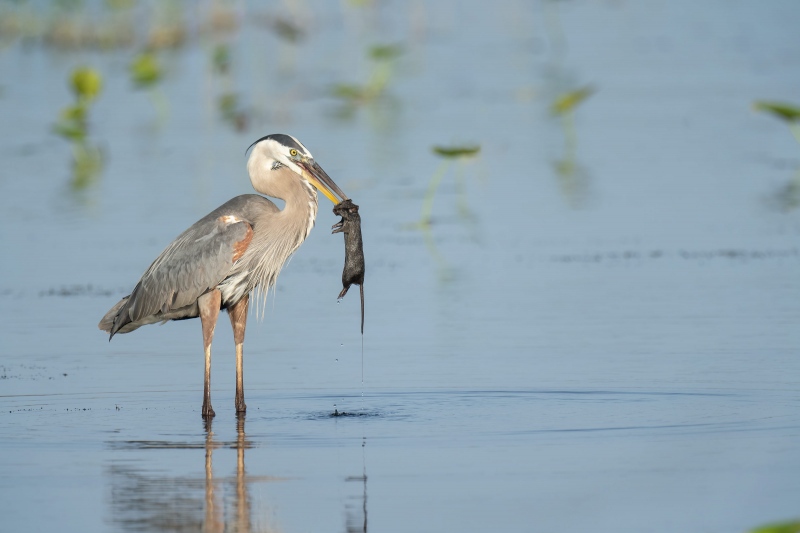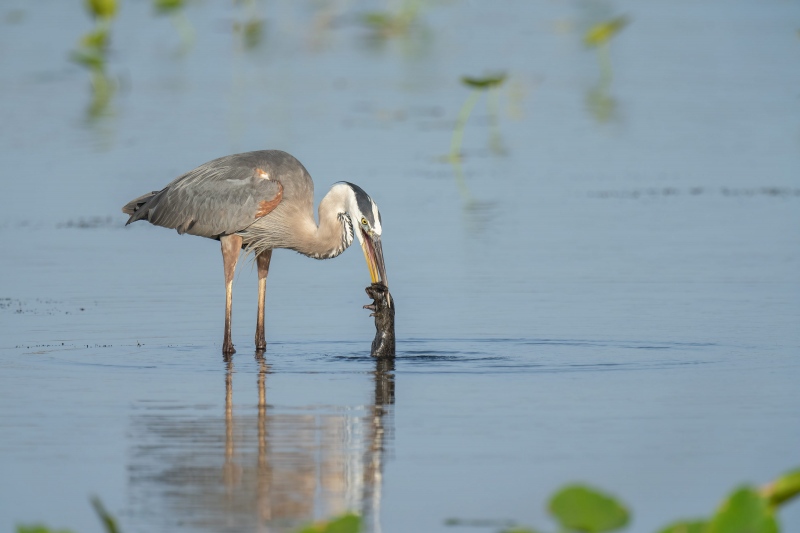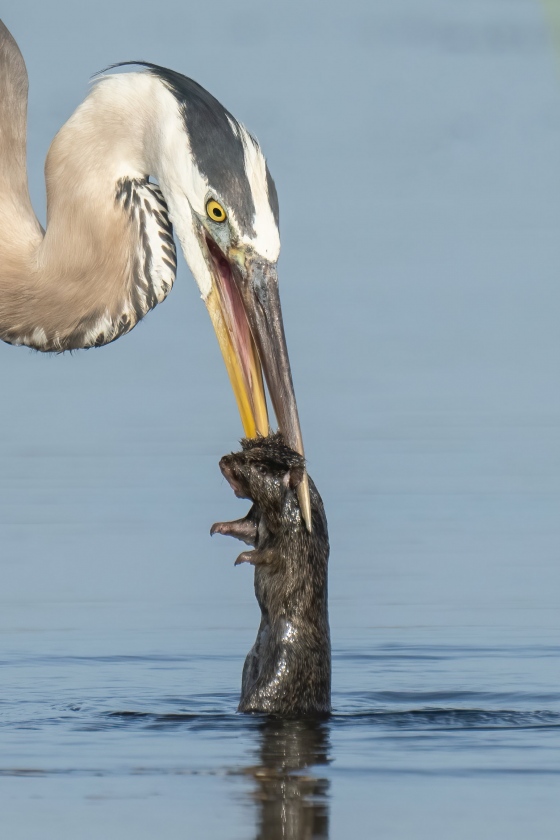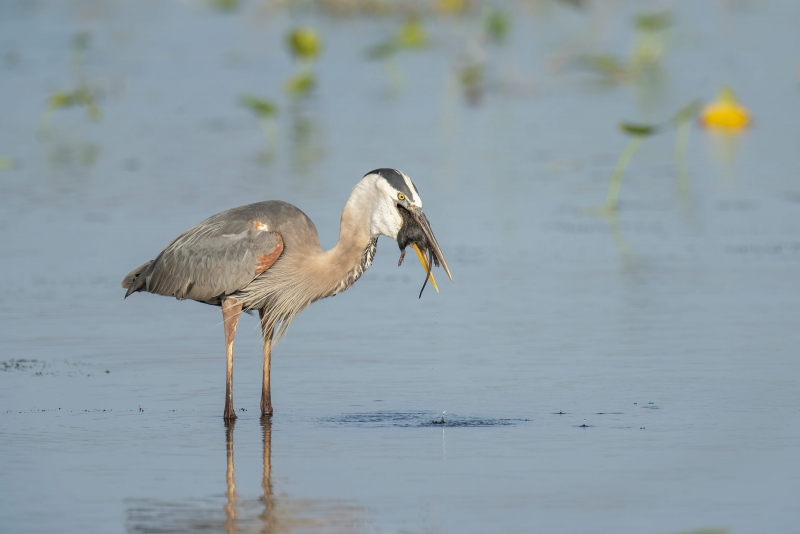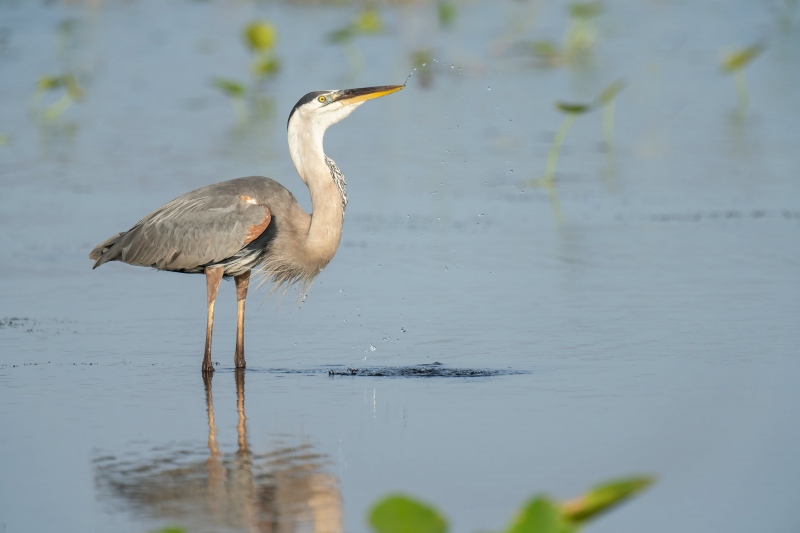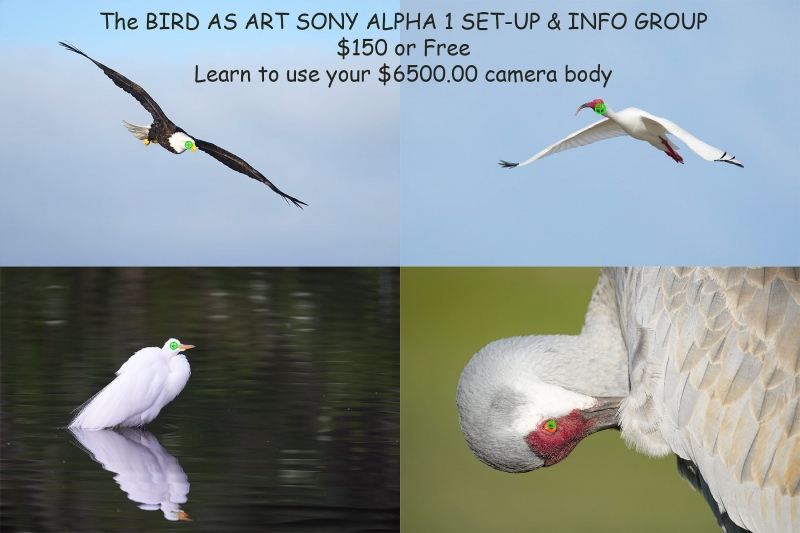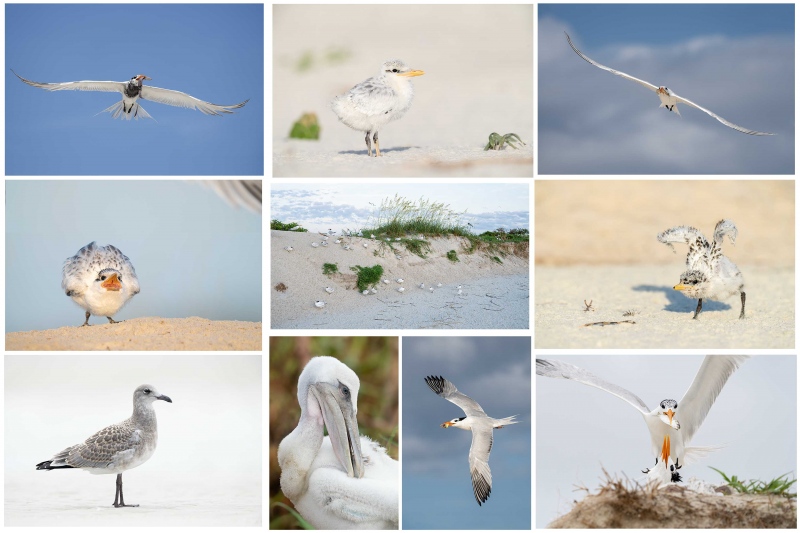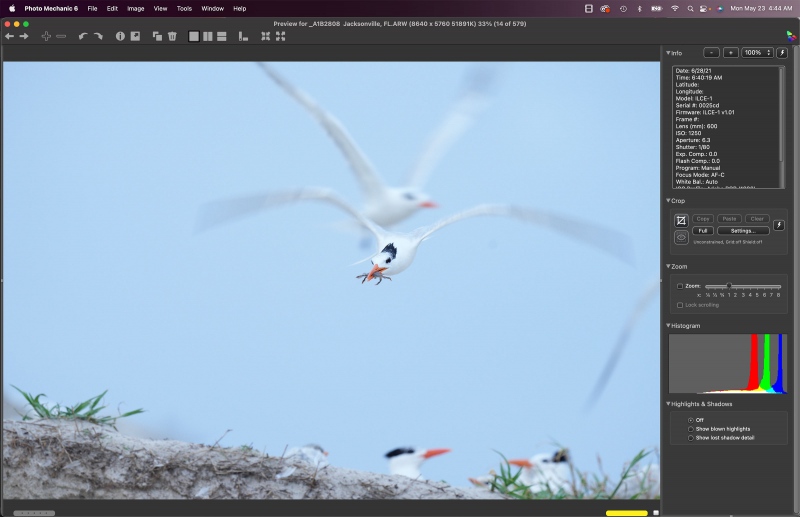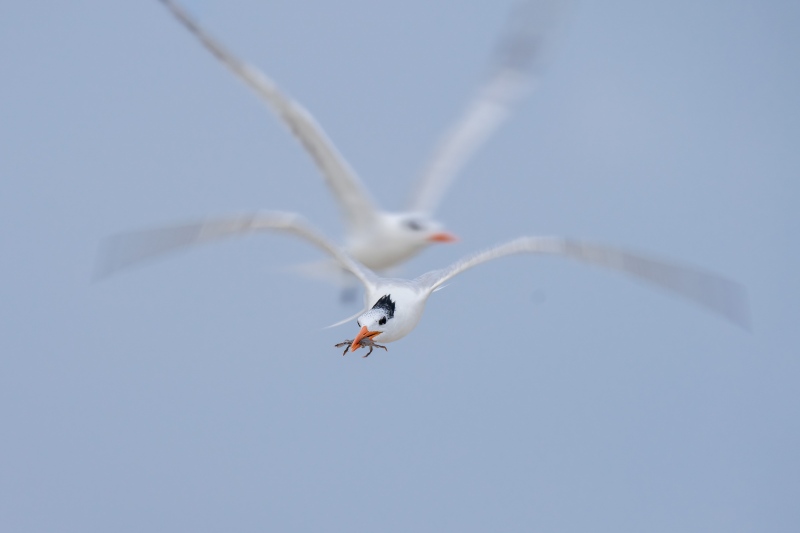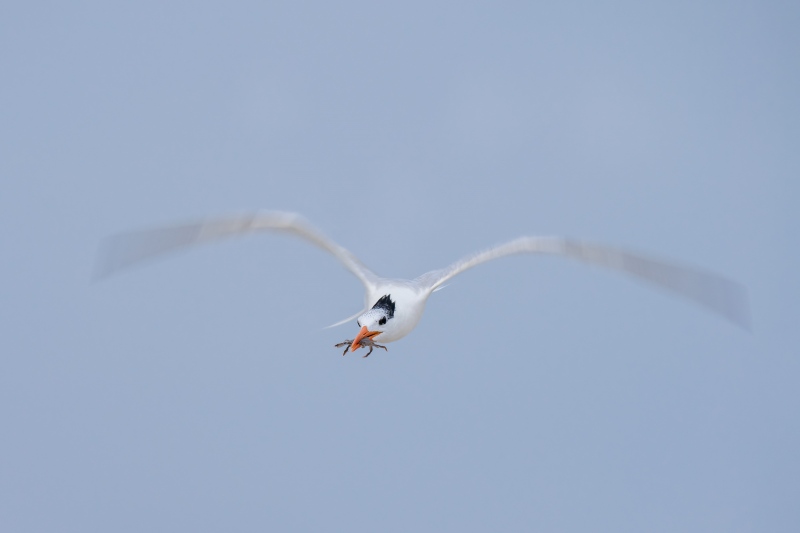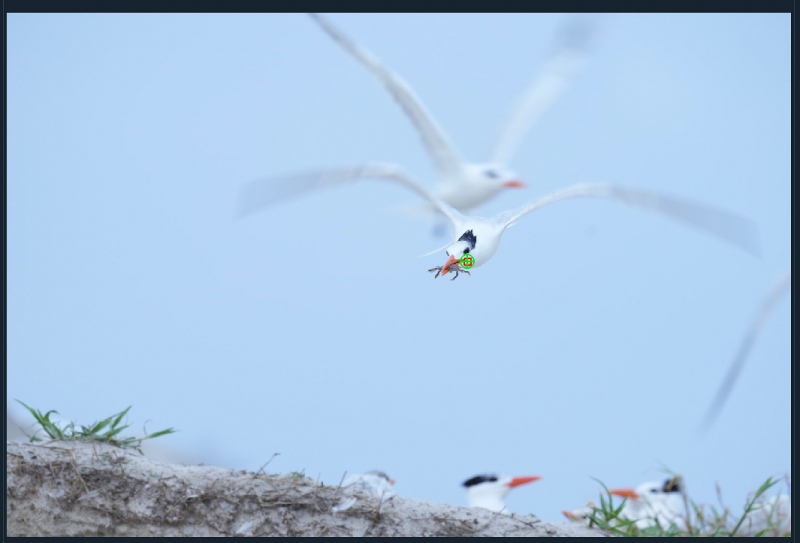What’s Up?
Tuesday morning was another in a string of gorgeous mornings at Indian Lake Estates with a nice breeze from the east. I played around with the 400 f/2.8 for the first time and was very pleased with the ease of handling, the razor thin d-o-f at f/2.8, the AF performance, and the images. More soon …
Today is Wednesday 25 May 2022. The forecast for this morning is for partly cloudy early with a freshening breeze from the ESE. I will be headed down to the lake early to play with my new toy. Wherever you are and whatever you are doing, I hope that you too have a great day. This blog post took about 90 minutes to prepare and makes seventy-five days in a row with a new one.
Please remember to use the B&H and Amazon links that are found on most blog pages and to use the BIRDSASART discount code at checkout when purchasing your new gear from Bedfords. Please, also, consider joining a BAA IPT. You will be amazed at how much you will learn!
BIRDS AS ART Image Optimization Service (BAA IOS)
Send a PayPal for $62.00 to birdsasart@verizon.net or call Jim at 863-692-0906 and put $62.00 on your credit card. Pick one of your best images and upload the raw file using a large file sending service like Hightail or DropBox and then send me the link via e-mail. I will download and save your raw file, evaluate the exposure and sharpness, and optimize the image as if it were my own after converting the raw file in Adobe Camera Raw. Best of all, I will make a screen recording of the entire process and send you a link to the video to download, save and study.
Flight Photography at Jacksonville Till You Can’t Lift Your Lens!
If you missed yesterday’s video, be sure to click on the words “Watch on YouTube (in white letters) in the lower left corner of the screen to view the video larger. As a late-registration enticement for the three Jacksonville IPTs, I will include the ride with me for free for the first two folks to sign up for each workshop. Please get in touch via e-mail with any questions.
Join me on the beach at Huguenot Memorial Park to learn about photographing terns in flight. 8,000 pairs of Royal Terns nest there and there are birds in the air all the time, often carrying all kinds of fish and crabs for their young. Learn how the relationship between the wind and the sun directions impact flight photography and about the best gear for shooting birds in flight. Note that all the images in the video were created with the Sony a1 (and a variety of lenses). Join me on a workshop at Jacksonville this summer. Scroll down here for details.
Canon EF 500mm f/4L IS II USM Lens with extras!
BIRDS AS ART Record Low Price
Douglas Smith is offering a Canon EF 500mm f/4L IS II USM lens in excellent condition (with a few tiny dings) for a very low $5,248.00. The sale includes the lens trunk with keys, the strap, the rear lens cap, the front lens cover, a Wimberley P-50 plate, a well-used LensCoat, and insured ground shipping via major courier to lower-48 US addresses only. Your item will not ship until your check clears unless other arrangements are made.
Please contact Doug via e-mail or via phone at 360-606-7835 (Pacific time zone).
The 500 f/4 super-telephoto lenses have long been the world’s most popular for birds, nature, wildlife, and sports for many decades. Canon’s Series II version is light, fast, super-sharp, and produces amazing images with both the 1.4X and 2X III TCs. The 500 II is relatively small, easily hand-holdable for some folks, and is much easier to travel with, focuses closer than, and costs a lot less than the 600 II or the 600 III! Lastly, and you might find this amazing, the magnification for the 500 II is the same as it is for the 600 II: .15X. How is that possible? Magnification is calculated at the minimum focusing distance of the lens — 12.14 feet (3.7 meters) for the 500 II and 14.77 feet (4.5 meters) for the 600 II. Simply put, the 500 II focuses more than two feet closer than the 600 II. Please do not tarry if you are seriously interested in Doug’s lens as it should sell quickly. Or not. 🙂 As the 500 II goes for $8999.00 new, you will be getting a great lens while saving a very handsome $,3,751.00! I loved my 500 II!
With the Canon Mount Adapter EF-EOS R, the 500 II will perform superbly with a Canon Mirrorless body like the R5 or the R3. And AF performance with the 1.4X III TC or the 2X III TC will be beyond superb as well. artie
|
|
|
This image was created on 22 May 2022 down by the lake at ILE. I used the no-longer available Induro GIT304L Stealth Carbon Fiber Tripod/Levered-Clamp FlexShooter Pro-mounted-Sony FE 600mm f/4 GM OSS lens, the Sony FE 2.0x Teleconverter, and The One, the Sony Alpha 1 Mirrorless Digital Camera). The exposure was determined via Zebra technology with ISO on the Thumb Dial. ISO 1250. 1/1600 sec. at f/8 (wide open) in Manual mode. When evaluated in RawDigger, the raw file brightness was determined to be dead-solid perfect. AWB at 8:04:51am on sunny morning. Tracking: Spot S AF-C with Bird Face/Eye detection enabled performed to perfection. Be sure to click on the image to enjoy a high-res version. Image #1: Great Blue Heron with Marsh Rat |
Keep Your Eyes Moving
Folks on IPTs, and others simply out photographing with me, are often amazed when I spot something great. The trick is to keep your eyes moving (even when you have a very good subject right in front of you). Look to the right, look to the left, and look behind you. You should be scanning almost constantly. Only ingrained habit made me look under the pier and spot a Great Blue Heron holding a prey item. This is an important practice that can be developed over time with practice. Work on it. It can pay huge dividends. And you will be able to impress your photo friends by spotting some exciting situations that they missed.
|
|
|
This image was also created on 22 May 2022 down by the lake at ILE. I used the no-longer available Induro GIT304L Stealth Carbon Fiber Tripod/Levered-Clamp FlexShooter Pro-mounted-Sony FE 600mm f/4 GM OSS lens, the Sony FE 2.0x Teleconverter, and The One, the Sony Alpha 1 Mirrorless Digital Camera). The exposure was determined via Zebra technology with ISO on the Thumb Dial. ISO 1250. 1/1600 sec. at f/8 (wide open) in Manual mode. When evaluated in RawDigger, the raw file brightness was determined to be dead-solid perfect. AWB at 8:05:00am on sunny morning. Tracking: Spot S AF-C with Bird Face/Eye detection enabled performed to perfection. Be sure to click on the image to enjoy a high-res version. Image #2: Great Blue Heron picking up Marsh Rat after dropping it |
Why Am I Always in a Hurry When Photographing Birds?
I am always in a hurry when I am photographing birds because I am scared that I might miss something. Once I saw the GBH on the north side of the pier with prey, I knew that it would swallow it in a few minutes at most. I rushed to my SUV, put the tripod in the back, and drove around the base of the pier as fast as I could. I needed to get out of my vehicle and on the tripod to clear the marsh grasses. I set up quickly, went with a high shutter speed — 1/1600 sec., raised the ISO until I had a few Zebras on the heron’s white cheek, acquired focus, and began making images. From the first keeper to the last was only 48 seconds. Had I tarried, I may very well have wound up with nothing … By hustling, I was able to create a neat sequence.
I know that on occasion sitting in one spot and waiting for something to come to you can yield some great opportunities and some great images, but not when you spot something exciting in a different location!
Note: once a fish or a rodent is subdued, i.e., dead, herons will often drop them in the water and then grab them again. I am not sure why.
|
|
|
Be sure to click on the image to enjoy the high-res version. Image #2A: Unsharpened tight crop of the Great Blue Heron picking up Marsh Rat after dropping it image |
Incredible Sharpness at 1200mm
It is an absolute luxury to be able to work at 1200mm with absolute confidence with The Sony 600mm f/4GM/1.4X TC/Alpha 1 combo. Birds holding prey items are usually quick to leave the scene if disturbed by an approaching photographer … While getting closer physically is often a great plan, you may wind up scaring away the very bird you want to photograph.
Exposing to the Right
Exposing to the right to the max in this situation ensured that there would be lots of detail in the dark tones of the rodent’s fur. Thanks to the incredible sharpness and fine detail it is easy to surmise that this particular Marsh Rat was not having a good day …
|
|
|
This image was also created on 22 May 2022 down by the lake at ILE. I used the no-longer available Induro GIT304L Stealth Carbon Fiber Tripod/Levered-Clamp FlexShooter Pro-mounted-Sony FE 600mm f/4 GM OSS lens, the Sony FE 2.0x Teleconverter, and The One, the Sony Alpha 1 Mirrorless Digital Camera). The exposure was determined via Zebra technology with ISO on the Thumb Dial. ISO 1250. 1/1600 sec. at f/8 (wide open) in Manual mode. When evaluated in RawDigger, the raw file brightness was determined to be dead-solid perfect. AWB at 8:05:25am on sunny morning. Tracking: Spot S AF-C with Bird Face/Eye detection enabled performed to perfection. Be sure to click on the image to enjoy a high-res version. Image #3: Great Blue Heron about to swallow Marsh Rat |
Use a Sturdy Tripod When Working at 1200mm!
Induro GIT304L Grand Series 3 Stealth Carbon Fiber Tripod
I learned recently that the MAC Group quit making the great Induro tripods because of increasingly high trade tariffs imposed on goods made in China (where the tripods were being made). I have been using the 304L as my workhorse tripod for more than a decade. The 304 L is perfect for folks under 6′ 1″ tall using big glass. I used mine in and around saltwater with impunity. Though it is sturdy and rigid and can support any large super-telephoto rig, it weighs only 4 pounds 10.7 ounces with the hanging-hook removed. It costs many hundreds of dollars less than the overpriced, overdone, clunky, Really Wrong Stuff tripod. The 304L meshes perfectly with the Levered-Clamp FlexShooter Pro that I love and use every day. And please do not insult this great head by mentioning the worthless and now obsolete RWS BH-55 bullheads in the same sentence …
Amazingly, we have two (and only two) brand-new-in-the-box Induro GIT 304L tripods in stock. They are $799.00 each plus the shipping. Weekday phone orders only: 863-692-0906.
|
|
|
This image was also created on 22 May 2022 down by the lake at ILE. I used the no-longer available Induro GIT304L Stealth Carbon Fiber Tripod/Levered-Clamp FlexShooter Pro-mounted-Sony FE 600mm f/4 GM OSS lens, the Sony FE 2.0x Teleconverter, and The One, the Sony Alpha 1 Mirrorless Digital Camera). The exposure was determined via Zebra technology with ISO on the Thumb Dial. ISO 1250. 1/1600 sec. at f/8 (wide open) in Manual mode. When evaluated in RawDigger, the raw file brightness was determined to be dead-solid perfect. AWB at 8:05:39am on sunny morning. Tracking: Spot S AF-C with Bird Face/Eye detection enabled performed to perfection. Be sure to click on the image to enjoy a high-res version. Image #4: Great Blue Heron drinking after swallowing prey |
You Can Bet On It
Whenever you see a large heron or egret swallow a large prey item, they will always bend down and take a drink of water. If they are on land when they swallow their meal, they will walk to the nearest water and take a sip. The only exceptions are birds swallowing prey in situations where there is no water in sight. Knowing and understanding bird behavior will enable to you create stronger images and tell better photo stories.
|
|
|
Click on the image to better see the green eye-AF boxes in action. Sony Alpha 1 Flight Photography AF Points! |
The SONY Alpha a1 Set-up Guide and Info Group: $150.00 (or Free)
The SONY Alpha a1 Set-up Guide and Info Group is going great guns as more and more folks chime in with thoughtful questions and experience-based answers. As the a1 is becoming more readily available, more and more folks are getting their hands on this amazing body. By early April, the group was up to an astounding 115 lucky and blessed folks. Early on, we discussed the myriad AF options. I gave my opinion as to the best one for flight and general bird photography. The best news is that everyone in the group receives an e-mail that includes a .DAT file with my a1 settings on it, and explicit directions on how to load my settings onto your a1; talk about convenience! I am now offering a .DAT file compatible with firmware update 1.20. Your entry into the group includes a consolidated Sony a1 CAMSETA2 INFO & GUIDE. New a1 folks will now receive four e-mails instead of the previous 28! You will see new e-mails as they are published. Simply put, this e-mail guide is an incredible resource for anyone with an a1.
All who purchased their Alpha 1 bodies via a BAA affiliate link — B&H or Bedfords — will receive a free Sony Alpha a1 Set-Up Guide and free entry into the Info Updates group after shooting me their receipts via e-mail. (Note: it may take me several days to confirm B&H orders.). Others can purchase their guide here in the BAA Online Store.
Typos
With all blog posts, feel free to e-mail or to leave a comment regarding any typos or errors.

